This Week's Show
Air Date: March 28, 2025
FULL SHOW
SEGMENTS

EV Charging Money Stalled
/ Lee HedgepethView the page for this story
Electric vehicle chargers are still few and far between compared to gas stations, and a program funded by the 2021 bipartisan Infrastructure Law sought to install many more. But now the Trump administration has stalled this funding for EV chargers. Lee Hedgepeth of Inside Climate News speaks with Host Jenni Doering about the political nuance of the pause. (11:38)

Greenpeace SLAPPed for $600 Million?
View the page for this story
A North Dakota jury found in favor of pipeline company Energy Transfer and ordered Greenpeace to pay more than $600 million in damages over its role in helping protest the Dakota Access Pipeline. Environmental law expert Pat Parenteau joins Host Steve Curwood to explain why he sees the case as a classic SLAPP or Strategic Litigation Against Public Participation suit and a threat to free speech. (19:46)

A Quest for Quiet
/ Ed JahnView the page for this story
The world can be an awfully noisy place. Ed Jahn of Oregon Public Broadcasting took a journey in search of silence and found what could be the quietest place in Oregon. (04:53)

Deb Haaland on Our Public Lands
View the page for this story
Deb Haaland became the first Native American cabinet member when President Biden appointed her as Secretary of the Interior and helped consult with tribes to designate new national monuments. Now she’s running for Governor of New Mexico, and Deb Haaland joins Host Jenni Doering to discuss the current threats to public lands and her deep ancestral connections to the New Mexican landscape. (12:02)
Show Credits and Funders
Show Transcript
HOSTS: Steve Curwood, Jenni Doering
GUESTS: Deb Haaland, Lee Hedgepeth, Pat Parenteau
REPORTERS: Ed Jahn
[THEME]
CURWOOD: From PRX – this is Living on Earth.
[THEME]
CURWOOD: I’m Steve Curwood.
DOERING: And I’m Jenni Doering.
Greenpeace faces severe legal consequences for helping protesters of the Dakota Access pipeline.
PARENTEAU: We’re seeing a pattern of very aggressive actions to punish, intimidate not just environmental groups but anyone who stands in the way of some of these powerful corporations. And they’re being emboldened by decisions like this and by what’s coming out of Washington D.C. and the White House.
CURWOOD: Also, former Secretary of the Interior Deb Haaland.
HAALAND: I had so many opportunities to be on our public lands when I was growing up, and I want that for every child. These lands belong to us and the Department of the Interior has an obligation to protect our cultural heritage for every American.
CURWOOD: That and more, this week on Living on Earth. Stick around!
[NEWSBREAK MUSIC: Boards Of Canada “Zoetrope” from “In A Beautiful Place Out In The Country” (Warp Records 2000)]
[THEME]
EV Charging Money Stalled

Tesla’s Supercharger network is already one of the most robust in the country, giving the company a significant head start—so while the pause in federal EV charging funds stalls other networks, Tesla is unlikely to be heavily impacted. (Photo: Ewan Streit on Unsplash)
CURWOOD: From PRX and the Jennifer and Ted Stanley Studios at the University of Massachusetts Boston, this is Living on Earth. I’m Steve Curwood.
DOERING: And I’m Jenni Doering.
Electric cars are generally much cheaper to run than gas or diesel ones, saving money as well as lives. It costs about three dollars to take a gas sedan 30 miles, but only about a dollar’s worth of electricity to power an EV sedan the same distance. And the American Lung Association estimates that shifting to 100% sales of zero-emission vehicles in the US over the next 30 years would save more than 100,000 lives and nearly a trillion dollars in health costs linked to air pollution. But the adoption of EVs is going slowly in the US, as potential EV drivers worry about getting stranded, as chargers are still few and far between, compared to gas stations. The answer is more chargers, hundreds of thousands of them, placed along major interstates, rural highways, and city streets, and the National Electric Vehicle Infrastructure or NEVI program helps pay for building them. But now the Trump Administration has stalled this funding for EV chargers. Lee Hedgepeth of our media partner, Inside Climate News has been reporting on this and he joins us now from Alabama. Hey, Lee, welcome to Living on Earth!
HEDGEPETH: Thank you. Thank you for having me.
DOERING: So, what is the National Electric Vehicle Infrastructure or NEVI program?
HEDGEPETH: So, NEVI Program is a program that was created by the bipartisan infrastructure law that was passed in 2021 and it's a program where the federal government is laying out a lot of dollars to help local governments, mostly state governments, in this case, to pay for and help subsidize electric vehicle chargers along major highways and interstates across the country.
DOERING: And so what is it that the Trump administration is trying to do with this program?
HEDGEPETH: So essentially, the Trump administration has paused all funding related to the program, first with an executive order that was issued by the Trump administration on day one, and then, with other guidance that was issued later by the Department of Transportation. They essentially told states these plans that you've submitted about how you plan to spend money that we're giving you through NEVI are invalid, and we'll give you other guidance later that will allow you to submit different plans, and we'll issue money later, once those plans are approved. But we still haven't seen those guidelines come out. So, as of now, all of this funding has essentially been paused across the country.
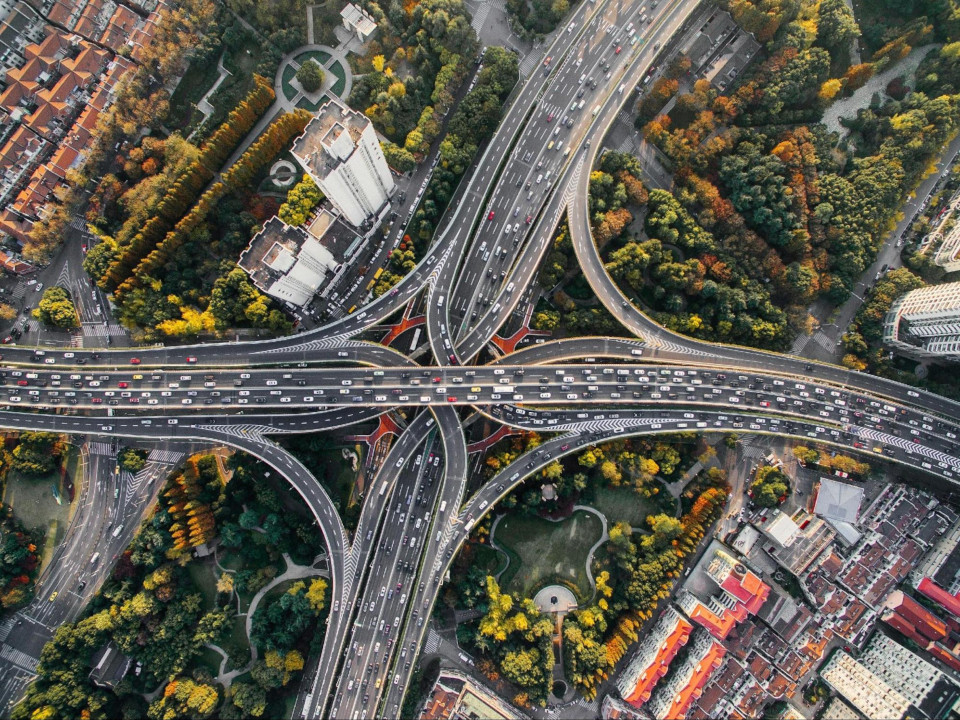
Combustion vehicles are a major source of air pollution and greenhouse gas emissions, which electric vehicles aim to reduce. Delays in building a nationwide charging network are expected to slow down the transition to cleaner transportation. (Photo: Denys Nevozhai on Unsplash)
DOERING: And what does the Trump administration's efforts to pause this funding for EV charging mean for the states receiving these funds?
HEDGEPETH: So, different states have reacted to this new guidance in different ways. So some states like Alabama have completely paused their programs, and other states, more liberal states with democratic governments, have said, we're going to fill in the gaps when it comes to these funds being paused. So here in Alabama, for example, there were 12 or 13 chargers that were being funded, mostly at truck stops across the states. Those funds have been paused, and the state government has really made no effort to fill in those gaps. So you're seeing different reactions from different states, but basically, what it's leading to is just a delay in getting these electric vehicle chargers built across the country in places where they're needed.
DOERING: Now, I know that when NEVI was implemented, the Biden administration set a target for at least 500,000 new publicly available chargers by 2030. How much progress had the US made towards that goal before this funding pause?
HEDGEPETH: Not a lot of progress. So, the rollout had been fairly slow, and that was something that folks on both sides of the aisle had criticized. So, I think until maybe 2023, 2024, during that period, they had only rolled out about a little over 100 chargers funded through the NEVI program, which is not a lot compared to the goals that the Biden administration had set out. And so you saw a lot of pushback from environmental groups who wanted this money to be rolled out quicker, not just because they wanted to see the electric vehicle charger infrastructure be better, but also because they were anticipating this potential rollback, which eventually happened under the Trump administration. So, there was definitely not as much progress as the Biden administration had hoped and that environmental groups had hoped in terms of rolling this out, and then obviously Trump throwing a wrench into this program is not going to help move this program along in any way.
DOERING: By the way, you mentioned that some of the more liberal blue states are saying they're committed to providing funding for these chargers, even if the federal government is stepping back. How does that funding compare to the federal funding?
HEDGEPETH: So, some states, including states like Alabama, do have electric vehicle charging programs, but that funding is just not anywhere as much as what we saw from the NEVI program. So in Alabama, for example, we were slated to receive about $79 million from the NEVI program during the five year period that that money was being expended, and during the same period, there was something like three or $4 million that the state had used in their kind of state level program. So it's not a lot, comparatively. Even in liberal states, state revenues in these individual states just aren't comparable to the the amount of money that Congress is willing to spend and did allocate through the infrastructure bill.
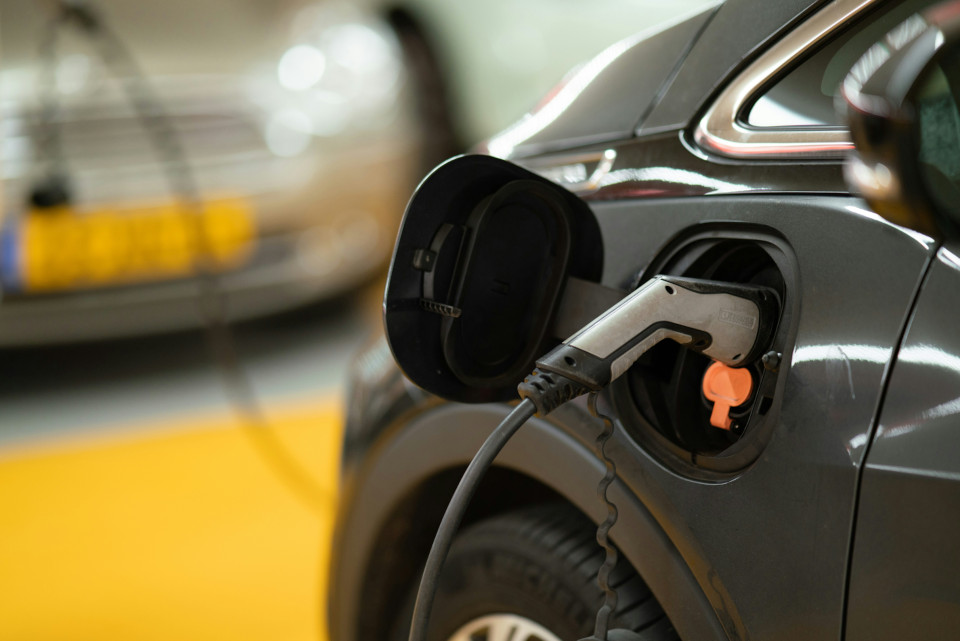
Electric vehicles produce zero tailpipe emissions and are a key tool in the fight against climate change. Building a reliable charging network is essential to ease range anxiety and encourage wider adoption across the U.S. (Photo: Michael Foursert on Unsplash)
DOERING: Lee, I think in your article, you wrote about how the Republican governor of Alabama came out in support of EVs. What has she said? And why is that?
HEDGEPETH: One of the things that governors like Kay Ivey here in Alabama like to tout is new jobs, for example. Governors in other Republican states will tout these types of spending on electric vehicle chargers, and also on the production of electric vehicles themselves. So you see companies like Kia and Hyundai, for example, that have factories in Alabama. And so when politicians are able to kind of tout those types of investments in the state, those are things that they you know, will go to the ribbon cuttings for, for example. There's also the dynamic of the people who are receiving these funds. So the NEVI funds, for example, and a lot of the funds that the state give out are going to private entities that have traditionally been donors to more conservative politicians. So in Alabama, many of the chargers that were going to be funded through the NEVI program were at Love's truck stops, which, obviously they're invested in fossil fuel extraction as well, in terms of they have many, many gas pumps across the state. And so, you know, one dynamic that's happening is you'll see companies like that, when we reached out to Loves, they said, you know, we're still committed to electric vehicle charging, and we'll continue to pursue money through this program. So you can imagine that in back channels, lobbyists for these kinds of companies are approaching politicians like Governor Ivey to kind of pressure them to say, look, may not be the biggest fan of electric vehicle chargers, but I think they were slated to get something like $6 million from the NEVI program. So you can imagine that even in Republican states, companies like Loves that are political donors of Republican politicians are probably pushing for this funding to be unpaused.
DOERING: That's a really interesting political dynamic.
HEDGEPETH: Yeah, for sure.
DOERING: And some of the recent news on EVs has been a bit head spinning, I have to say, with President Trump trying to cancel EV friendly policies while also holding what essentially amounted to a Tesla commercial at the White House alongside Elon Musk. By the way, Teslas are being vandalized as people react to Elon Musk's policies. What do you think the pause to EV charging funds might mean for Tesla?
HEDGEPETH: Yeah, that's a really interesting question. So if you look at just the raw number of chargers across the country, Tesla is really at an advantage in terms of the infrastructure that already exists. The Tesla Supercharger network is widely regarded as one of the most robust across the country, and so pausing funding that would allow for other types of chargers, so the chargers proposed in Alabama, for example, they weren't going to be Tesla chargers, right? These are other third-party contractors coming in and building these chargers. So pausing that program kind of limits the ability of other companies to catch up to where Tesla was in terms of the DC fast charging network.

Lee Hedgepeth is Inside Climate News’ Alabama reporter, where he covers environmental and political issues impacting marginalized communities. Raised on the Gulf Coast, his award-winning journalism has appeared in outlets across the country and focuses on stories often overlooked in the Deep South. (Photo: Courtesy of Lee Hedgepeth)
DOERING: Where do you think we are right now in the US in terms of electric vehicle adoption, and how might this pause impact the future of electrified transportation in the US?
HEDGEPETH: Well, we've seen increases pretty much every year in terms of the number of EVs that are sold in the United States. It's still a small proportion compared to the number of gas vehicles that are sold. The numbers are continuing to increase, and electrification of transportation is something that even car manufacturers that produce mostly gas vehicles see as being part of the future of transportation, regardless of pauses like this. There's also, in terms of what this means, in terms of that shift towards electrification in transportation, the rollout was fairly slow, and the number of chargers that were going to be supported by this program aren't going to reach the number of chargers that groups that are experts in this field say are going to be needed in terms of sustaining electric vehicles across the country as more and more people adopt them. So, it's obviously a setback in terms of getting, particularly government subsidized chargers rolled out across the country. But this still would only be a small step towards what is going to have to be a large, large rollout of electric chargers across the country.
DOERING: Now, there's been some litigation along the lines of this attempted pause in funding for EV charging, and I imagine this will be challenged in court alongside the Trump administration's other directives. From what you're hearing from policy experts, how likely do you think it is that the pause would hold up in court?
HEDGEPETH: I spoke for this article to an expert in this space who said it may not be legal for the Secretary of Transportation to revoke these plans that had been submitted. So, the federal government asked individual states, this was under Biden, to submit these plans about how they would spend the money under NEVI. And all of the states, including red states, blue states, submitted these plans and they were approved by the government, and when Trump came into office, all of those plans were declared null and void, essentially. So there's definitely going to be a legal challenge over that. And then there's kind of the argument that's been made in lots of these cases over funding about, the ability of the executive to kind of roll back funding that's been allocated by Congress. So, this kind of separation of powers issue that is going to have to be litigated and decided by judges.
DOERING: Lee Hedgepeth covers Alabama for our media partner, Inside Climate News. Thank you so much, Lee.
HEDGEPETH: Thank you, Jenni.
Related links:
- Read Lee Hedgepeth’s full report at Inside Climate News
- Visit the official NEVI program site, now reflecting the suspension of previously approved state plans
- Explore the Biden administration’s plans for EV infrastructure
[MUSIC: Doc & Merle Watson Remembering Merle Traditional fiddle tunes “Nancy Rowland/Salt Creek” Sugar Hill Records]
CURWOOD: Coming up, a massive verdict against Greenpeace over its role in the Dakota Access pipeline protests threatens free speech. Stay tuned to Living on Earth.
ANNOUNCER: Support for Living on Earth comes from Sailors for the Sea and Oceana. Helping boaters race clean, sail green and protect the seas they love. More information @sailorsforthesea.org.
[CUTAWAY MUSIC: Darol Anger and Mike Marshall, “Bach Prelude” on Chiaroscuro, public domain, Sony Music Entertainment]
Greenpeace SLAPPed for $600 Million?
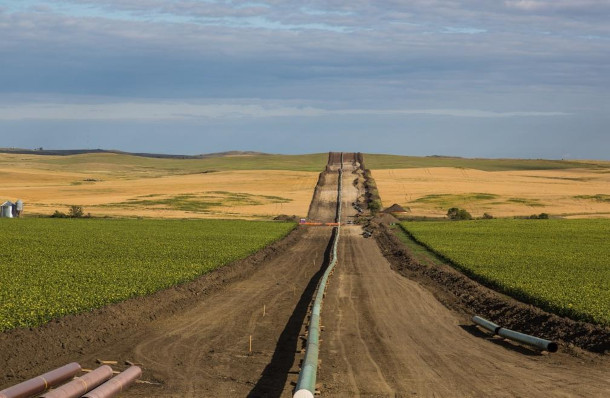
Shown above is the Dakota Access Pipeline, as seen from New Salem, North Dakota. The Standing Rock Sioux Tribe opposed the pipeline’s construction, saying that it threatens sacred sites and the tribe’s water supply. (Photo: Tony Webster from Minneapolis, Minnesota, Wikimedia Commons, CC BY-SA 2.0)
DOERING: It’s Living on Earth, I’m Jenni Doering.
CURWOOD: And I’m Steve Curwood.
Nearly a decade ago in April of 2016, a remote stretch of the Missouri River became the site of a major protest led by the Standing Rock Sioux against the construction of the Dakota Access pipeline. The tribe feared that an oil spill could contaminate their sacred sites as well as the river that supplies their water, so they formed “water protector” camps near pipeline construction. Eventually, over a thousand people from all over the world joined the protest, some camping out for weeks. But pipeline developer Energy Transfer was determined to finish construction, and in late 2016 local police and private security hired by the company clashed with protesters. Freelance journalist Sandy Tolan was there reporting for Living on Earth and captured a tense encounter when Ponca nation protester Mekasi Camp-Horinek stood his ground.
DEMONSTRATORS: I’m here to uphold traditional law. I’m here to uphold treaty law which is the supreme law of this land.
SHERIFF: You really believe that? So you should just take anybody's house you want because you know it's yours.
CAMP-HORINEK: No. No, I should be able to take back land, that the United States government broke the treaty. We didn't break the treaties. Our people didn't break the treaties, the government broke the treaties.
SHERIFF: We have to enforce private property laws.
CAMP-HORINEK: OK, well you’re going to have to because we’re not moving.
SHERIFF: You’ll be arrested if you’re on private land. We’re here telling you. It is a private property and you have to leave. Mekasi, we don’t want a confrontation.
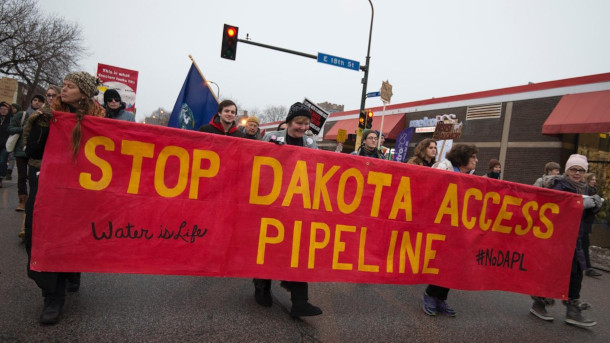
People from around the country protested the Dakota Access Pipeline construction. (Photo: Fibonacci Blue from Minnesota, USA, Wikimedia Commons, CC BY 2.0)
CAMP-HORINEK: I understand that, but listen –
SHERIFF: Please, stand your people down, and go back to the main camp and let’s talk.
CAMP-HORINEK: Highway 1806 is now a no surrender line and that camp is no retreat!
SHERIFF: That’s your final word?
CAMP-HORINEK: That’s the final word.
SHERIFF: Take care gentleman.
TOLAN: The officers walk back to their vehicles, and sense of tense anticipation settles over the treaty camp. The next morning, October 27, the police return – with hundreds of reinforcements.
[SOUNDS OF POLICE RESPONSE AND HELICOPTER]
POLICE: If you’re on that property you will be arrested…
TOLAN: I’m looking at a line of about... at least 100 officers dressed in black and National Guardsmen dressed in camouflage and then county officers dressed in khaki, forming three flanks on either side of military-style vehicles including a mine-resistant vehicle that has been designed for use against IEDs in Iraq and is being deployed here against very raucous – but so far unarmed – peaceful resisters.
CURWOOD: That’s an excerpt of reporting by Sandy Tolan from 2016. Sandy reported that day the authorities advanced and deployed pepper spray, rubber bullets, beanbag rounds and tasers before arresting around 140 people. The protesters kept resisting for months but after hundreds of arrests and injuries, the camps eventually disbanded and the pipeline was completed in April 2017. In 2020 federal district judge James Boasberg ordered the pipeline to shut down pending environmental review, but his decision was quickly reversed on appeal. And after all that, it appears there was still more for the protesters to lose. Energy Transfer headed to court in 2018 to sue the environmental activist organization Greenpeace for aiding the protesters. And after years of litigation working its way through the courts, on March 19 of this year a North Dakota state court jury found in favor of Energy Transfer, ordering Greenpeace to pay more than $600 million in damages. Vermont Law and Graduate School Emeritus Professor Pat Parenteau joins us now to discuss the case and its potential consequences. Hey Pat, welcome back to Living on Earth!

If Greenpeace is forced to pay the over $660 million a North Dakota court awarded to Energy Transfer, the environmental advocacy organization will likely go bankrupt. (Photo: Greenpeace, Wikimedia Commons, CC BY-SA 4.0)
PARENTEAU: Thanks, Steve, good to be with you.
CURWOOD: So we're talking about this case against Greenpeace, where a North Dakota court has awarded Energy Transfers something on the scale of more than $600 million, well, because of Greenpeace's involvement with the Dakota Access Pipeline protest. So first question for you, Pat, why does this ruling cause a chilling effect for activists in your view?
PARENTEAU: Well, because it potentially will bankrupt Greenpeace, one of the most well-funded and active environmental organizations in the world, right? There are three different entities of Greenpeace, the Greenpeace USA, Greenpeace International, and the Greenpeace Fund. But collectively, this is a tremendous blow. I mean, it has seismic proportions to it. $667 million was the latest tally. We've never seen anything like that in all of these cases against environmental groups. So, chilling effect, oh, my God. I mean, it's more than that. It's, "Don't you dare raise your voice in opposition to what fossil fuel industry is doing." That's what it says.
CURWOOD: You know, some call this a SLAPP suit. Remind us of what that is and why that claim is made in this case.
PARENTEAU: Right, it stands for the Strategic Litigation Against Public Participation, SLAPP. And these are cases like this one, where powerful companies and here we're talking Energy Transfer, a $70 billion a year corporation, bringing suit against Greenpeace and pummeling them with all the litigation related costs. There were over 100 depositions in this case, for example, each one of those is incredibly expensive. So the idea here is, you bring a lawsuit. You challenge these groups, as in this case, defamation, trespass, tortious interference with business reputation and so forth. This is the playbook of SLAPP suits. You bring a lot of really high-octane allegations, and you try to intimidate the environmental group. And sometimes it isn't environmental, it could be other groups as well, into quitting, into giving up. And then you try to intimidate them further to never bringing another action against them, whether it's a direct action, a disobedience action or protest action, whatever it is, this is to send a economic signal to the environmental community, you better not do it.

Pat Parenteau is a professor at Vermont Law and Graduate School. (Photo: Vermont Law and Graduate School)
CURWOOD: So in this case, right now, there's a $667 million possible award here, but before there was even an award made in this case, what do you think it costs Greenpeace, how expensive is it to face something like this kind of SLAPP suit?
PARENTEAU: Well, they were fortunate in having a lot of lawyers donating their time, as we call it, pro bono. If they hadn't had access to that kind of legal support, it would have been in the millions, easily, a case like this that's been in the court. And by the way, this is the second case that Energy Transfer has filed. The first one they filed in federal court under what we call RICO, the racketeering law, alleging all kinds of spurious criminal behavior. The federal district court wasted no time dismissing that case. That was an example of how a SLAPP suit can be dismissed on the grounds that it's just frivolous, right? So after Energy Transfer lost that case, they immediately filed this case, the one we're talking about, in state court. So when you add up all of the legal bills and all of the costs associated with litigation, you are talking seven figures easily before the verdict that we're going to be talking about.
CURWOOD: So if the federal court found the action brought by Energy Transfer was frivolous, what are Energy Transfer's claims against Greenpeace that stood up in the state court?
PARENTEAU: Right, so they had about three or four major ones trespass because, of course, the protests, which involved well over 100 Native American tribes. So you had this multi-year demonstration occupation going on. And naturally, when you have, I mean, at one time, I think there were like 2000 people, some of them campedin the wintertime, over extended periods of time. So trespass is a classic allegation in a demonstration like this, when you're trespassing on private property owned by Energy Transfer. Greenpeace maintains that it never was physically present at the site. Energy Transfer says they were, so that's one of those disputed issues, but the point is that they were brought in by the tribe. They did provide funding and training. They provided solar equipment to try to power some of the camps that were set up up there in the wintertime and so forth, trespass, defamation, and vandalism. So there were some incidents of, attempts to, I guess, disable some of the construction equipment. Again, Greenpeace says we had nothing to do with that. But what Energy Transfer is claiming is, "Yeah, but you orchestrated all this. You fomented this kind of activity. You supported it." So, you know, that's what went to the jury. And then, of course, you get to the question of, okay, what was the jury? And perhaps we should talk about that.
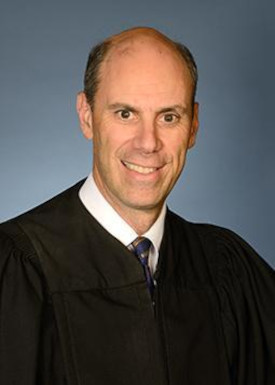
Judge James E. Boasberg. In July of 2020 Judge Boasberg ordered operation of the Dakota Access Pipeline suspended until the US Army Corps of Engineers completes an environmental impact statement. His order was overruled on appeal. (Photo: United States District Court for the District of Columbia, Wikimedia Commons, public domain)
CURWOOD: We will. What's the quality of the jurisprudence in this case? The judge, the jury? What are we looking at?
PARENTEAU: Now, one interesting thing is this is in a very rural county around Mandan, North Dakota, and one interesting point is that all of the judges in this county recused themselves, said "we don't think we can fairly administer a trial." So they had to bring in a judge from another location in North Dakota. This judge didn't volunteer for this. He was assigned, he was told, to conduct this trial. He's never conducted a trial like this. Of course, this is a pretty major undertaking, and certainly has no experience with First Amendment rights, for example, which are central to a case like this. And this judge had no experience with that. The jury is another interesting thing. You're talking about people who had to live with a protest that went on for over a year. I think it was almost two years and a lot of uproar. There were dogs being sicked on people. There were pepper spray being used on people. There was some incidents of outright violence, fist fights and so forth. So you've got people that were marinating, if you will, in all of this protest activity, and then they're asked to sit and be impartial in rendering a judgment? And when you look at the size of this award, $300 million of what we call compensatory damage, or actual damage, and another $300 and plus million for punitive damage, and just the sheer size of this award tells you this was a jury likely predisposed in favor of Energy Transfer and against Greenpeace. It did take them two days of deliberation, but that's probably just because it took so long to add up all the damages, right? So this is, I think, one of the issues on appeal is going to be whether or not this jury was biased to the point where nothing that Greenpeace would have said would have changed their mind.
CURWOOD: So what does happen next? How likely is this case headed to the North Dakota Supreme Court, and what are the pluses and minuses for Greenpeace's position at that court? If the judge is inexperienced, how many mistakes might that Judge have made, do you think?

Parenteau fears that if the case makes it all the way to the United States Supreme Court our First Amendment rights could be infringed. (Photo: Vermont Law and Graduate School)
PARENTEAU: Yeah, I mean, we're going to see a number of assertions of error. There were lots of rulings, as you might imagine, on evidentiary matters. You know, will certain things come into evidence or not? I mean, just give you one example of the damages that's been asserted here. Energy Transfer says we calculate that the delays in the permit process, this is primarily a corps of engineers permit to lay the pipeline below the Missouri River where the tribe's water intake facility was, right smack there where they were putting the pipeline right. That's what the tribe was mainly concerned about. Energy Transfer says that delay in the core permitting process cost us $100 million. Now I don't have any idea whether that figure is even accurate. Let's assume it is. How do you attribute to Greenpeace that kind of delay in a permit process? Judge Boasberg ruled in favor of the tribe and in favor of the environmental interests in the case, and said the Corps of Engineers violated the National Environmental Policy Act and other statutes, and awarded relief to them. So it's just an example I'm trying to point out of, how does a jury reach a verdict that delay in the permit process that a court said was justified because the Corps of Engineers violated the law? How do you sock Greenpeace $100 million for that? So all of this says to me, in a normal situation, that kind of jury bias would invalidate the verdict and require a new trial in a different location. Whether that's going to happen in North Dakota, I wouldn't bet on it. North Dakota Supreme Court refused to transfer the case. That's what Greenpeace was trying to do, trying to get it into a more urban area, far removed from the scene of the battle, so to speak. That doesn't bode well for an appeal on some of these grounds, but there will be many grounds, First Amendment grounds, infringement of free speech and so forth. There will be lots of arguments in the North Dakota Supreme Court. I think Greenpeace should win, at least, if not a full reversal, certainly should win a reduction, a radical reduction, in the damages that's been awarded against them, and particularly the punitive damages. But as we always say, we'll have to wait and see.
CURWOOD: So Pat, what grounds if any, could take this case to the United States Supreme Court?
PARENTEAU: That would be the First Amendment questions. If this case were to wind its way to the United States Supreme Court on the question of whether the speech and conduct and activity that Greenpeace engaged in here was protected by the First Amendment or not, I kind of fear the answer to that question. I wouldn't prejudge it, because the First Amendment covers lots of interests on the left and the right. So you'd like to think the United States Supreme Court would treat an issue like this with the respect that it deserves, regardless of the parties that are involved, but you have very powerful corporate interests on one side, and what I think the court would perceive to be troublemakers on the other side. It's a little scary to think about what might happen if that case were to get to the Supreme Court. So those that are thinking about this, you've got to be careful these days about what you wish for and whether or not, strategically, this is a case that you want the United States Supreme Court to decide.
CURWOOD: Pat, by the way, I understand that Greenpeace is taking Energy Transfer to court in the Netherlands. What's the situation there?

Thanks to a rule in the European Union, Greenpeace is suing Energy Transfer in the Hague District Court. It’s unclear whether the Hague District Court has any jurisdiction over Energy Transfer since the company doesn’t operate in the Netherlands. (Photo: RustamAug, Wikimedia Commons, CC BY-SA 4.0)
PARENTEAU: Yeah, so this is fascinating. So in the European Union, there's what we call a directive. It'd be a rule here in the United States. It has legal force, and it's an anti SLAPP rule. So it provides a cause of action in the country, in this case, the Netherlands, where the party that's complaining about being the victim of a SLAPP suit, in this case, Greenpeace International, is located, is incorporated. So Greenpeace International is incorporated in the Netherlands, it brought an action in The Hague District Court of the Netherlands against Energy Transfer. And it's a very, very detailed, there's a name for it. We would call it a complaint. And it's incredibly detailed. I just, I just got done reading it, it's like 30 pages. It's a very strong complaint. I mean, I've talked to some European lawyers who say it's a slam dunk. But here's the thing, how does the Court in the Hague get jurisdiction over Energy Transfer? Energy Transfer has no presence in the Netherlands. They don't do business there. They don't sell products there. They have no contacts. In the United States, that would mean there's no jurisdiction over them. I don't know what it means in The Hague District Court. We'll have to wait and see. The other thing is, once a jury has rendered a verdict in a case in favor of the party who brought it, is it still a SLAPP suit? I don't know the answer to that either. That'll have to be decided by the Hague Court, and there's no precedent. But they might get a default judgment if Energy Transfer opts not to show up and say, you don't have jurisdiction. We're not even going to appear. The court could issue a default judgment, and it would be based on whatever calculation of damage that Greenpeace International can prove. The problem there would be then you have to get that judgment transferred to the United States so it can be enforced. And then you have a question of whether a United States court would recognize a judgment from another country where the US corporation doesn't do business. These are all new, new issues for all of us to sort through. It's a sign of the times for sure.
The video below was published by Energy Transfer about the case the company first filed in Federal Court against Greenpeace and others, which was dismissed. The subsequent filing in North Dakota state court resulted in the 2025 awarding of more than $600 million in damages.
CURWOOD: Pat, what does this case say about these times and the state of play for climate activists and First Amendment rights of free speech and assembly the way business has been done over let's say the last generation, or even the last century of protests here?
PARENTEAU: Well, it's a more perilous time than it's ever been. It's not that environmental groups have never been sued, but this is different now. The verdict awarded, the circumstances under which it was adjudicated, the determination of a company to actually put a major environmental organization out of business. That's new. The fact that we're seeing Exxon suing shareholders successfully and forcing those shareholders to agree in a settlement they'll never bring another shareholder petition challenging what Exxon is doing. Exxon suing the Attorney General of California, the Attorney General of Massachusetts for defamation. This is what we're seeing. We're seeing a pattern, very aggressive actions to punish, intimidate, not just environmental groups, but anyone who stands in the way of some of these powerful corporations. And they're being emboldened by decisions like this and by what's coming out of Washington, DC and the White House right now, I think it's providing what's sometimes called a permission structure to bring cases like this to silence critics. Unfortunately, for the moment, anyway, we seem to be stuck in that kind of a cycle.
CURWOOD: Pat Parenteau is an emeritus professor of law at the Vermont Law and Graduate School. Pat, thanks so much for taking the time with us.
PARENTEAU: Thanks for the opportunity, Steve, appreciate it.
CURWOOD: After the verdict Energy Transfer called this “a win for all law-abiding Americans who understand the difference between the right to free speech and breaking the law. That the disrupters have been held responsible is a win for all of us.” More of their statement is on the Living on Earth website, loe.org.
Energy Transfer Statement
"While we are pleased that Greenpeace has been held accountable for their actions against us, this win is really for the people of Mandan and throughout North Dakota who had to live through the daily harassment and disruptions caused by the protesters who were funded and trained by Greenpeace. It is also a win for all law-abiding Americans who understand the difference between the right to free speech and breaking the law. That the disrupters have been held responsible is a win for all of us."
Related links:
- Learn more about Pat Parenteau
- Read the legal documents associated with the case
- Read more about the case
- Sandy Tolan’s 2016 documentary for Living on Earth, "Dakota Pipeline High Stakes"
[MUSIC: Baker St., “The First Step” on The First Step, Baker St.]
DOERING: Just ahead, the need for quiet and the need for natural spaces. Keep listening to Living on Earth.
ANNOUNCER: Support for Living on Earth comes from Friends of Smeagull the Seagull and Smeagull’s Guide to Wildlife. It’s all about the wildlife right next door to you! That’s Smeagull, S - M - E - A - G - U - L - L, SmeagullGuide.org.
[CUTAWAY MUSIC: Baker St., “The First Step” on The First Step, Baker St.]
A Quest for Quiet
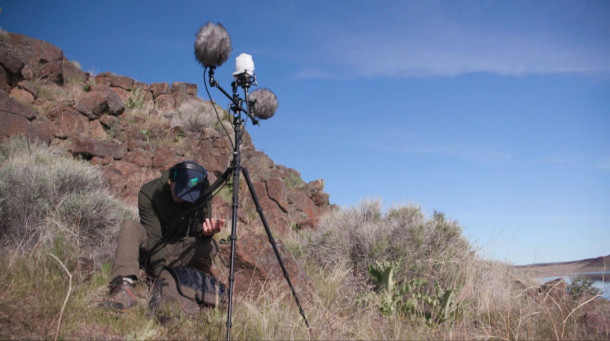
Nick McMahan, sound recording artist. (Photo: Brandon Swanson, OPB)
DOERING: It’s Living on Earth, I’m Jenni Doering.
CURWOOD: And I’m Steve Curwood. The world can be an awfully noisy place. Many neighborhoods hum with the constant noise of leaf blowers, construction equipment and revving cars. So you might wonder where you can go to escape all that racket. Ed Jahn of Oregon Public Broadcasting took a journey in search of silence, and found what could be the quietest place in Oregon.
JAHN: There are more than 8 billion people on this planet. And we make a lot of noise.
(Open scene/ kids scream, band noise, concert)
JAHN: There is relief, though, according to a noise model developed by the research firm Ambient Logic in conjunction with the National Park Service. The model identified a location in southeast Oregon that could be the quietest place in the state. But it’s never been ground-truthed.
(open scene…car door, drive off)
JAHN: To see if the model lived up to the hype, I left the cacophony of Portland to join Nick McMahan, a specialist in natural sound recording. We met at Malheur National Wildlife Refuge to record the kind of noise most people don’t object to.
(bird song)
MCMAHAN: Initially, I came here two years ago and it was fascinating sounds- the birds I'd never heard before, and I think we're starting to hear them picking up again, which is exciting for me. You can kind of hear it settling even, between the wind, you can start hearing the communication between the animals and just the silence really starts to feel like a part of a you too. You kind of feel that settling. It's just really beautiful.
(bird song)
JAHN: These birds were hitting in the mid-40’s on our decibel meter. In contrast, a passing truck we measured in Burns on our way here spiked above 90.
(truck passing)
MCMAHAN: 93! That was a good one. It’s interesting because human conversation is kind of known to be around 60 decibels. Here that car that just went by was at like 73, which means we have to talk a little louder to be able to hear each other, right?
(truck passing)
JAHN: But to get to the quietest place in Oregon identified by the noise model meant driving for hours through southeast Oregon on dirt roads and then on a faint two-track that cut across sweeping hills full of fragrant sagebrush.
JAHN: Wow. This is a blank spot on the map for sure. I think we're going to park it and huff it. Then, we hiked. We hadn’t seen any signs of people for hours by the time we made it to a region known as the Basque Hills. It was a lovely spot, but mostly, kind of barren. Nothing worthy of National Park status.
MCMAHAN: This whole place is very subtle, the lack of lights on the horizon, that's really hard to find anywhere. We're seeing for 40 miles, we're at 5,000 feet and you can't see a single light.
JAHN: McMahan’s interest in places like this stems from his work with Quiet Parks International, an organization at the center of an increasingly popular movement to preserve quiet places.
MCMAHAN: It's, it’s almost like meeting like a human need as we're losing quiet spaces. It meets the need of people to have that awareness of listening and of being in quiet when they have an opportunity to. It's surprisingly few and far between.
JAHN: It took us a few football fields of hiking before we reached the exact coordinates identified by the noise model.
MCMAHAN: This is it.
JAHN: Oh, nice.
MCMAHAN: Right here.
JAHN: Sweet.
MCMAHAN: Hey, this is the quietest spot in Oregon.
JAHN: McMahan set up his recording equipment as our decibel reader hit about 30. That’s about as low as we could expect our off-the-shelf model to accurately measure.
MCMAHAN: Silence through a microphone is tricky, because it’s the lack of sound and that’s also part of the challenge and the excitement of it, is trying to figure that out.
JAHN: For a while, an audible breeze made this place seem not all that special. But then, the sun went down and the wind stopped. Now if you’re listening in your car or while out on a jog you might want to pull over or press those headphones to your head, because this is what McMahan recorded overnight.
(:05 of quiet)
JAHN: The almost total silence of the pre-dawn hours was followed by birds and coyotes waking at dawn.
(birds chirping and coyotes howling)
JAHN: And then near-silence again as the sun came up. If there is a quieter place on earth, it’s unlikely any human ears could tell the difference.
CURWOOD: Ed Jahn of Oregon Public Broadcasting produced that story as part of its Oregon Field Guide series.
Related links:
- Read more about Oregon’s Basque Hills
- Hear this story on Oregon Public Broadcasting’s website
- Oregon Public Broadcasting | “The World’s Largest ‘Dark Sky Sanctuary’ Is Now in Oregon”
[MUSIC: Pat Barrett, “Sparrows And Lies” on Pat Barrett, Capitol Christian Music Group, Inc.]
Deb Haaland on Our Public Lands
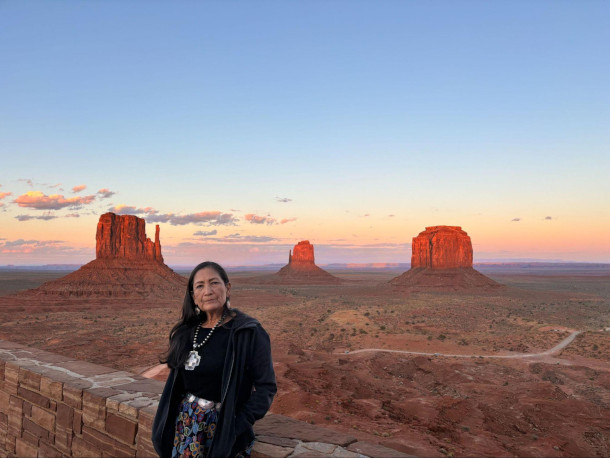
Deb Haaland served as Secretary of the Interior under President Biden from 2021-2025. She was the first Native American to serve as a cabinet secretary. She is pictured here at Monument Valley in Arizona. (Photo: Deb Haaland for New Mexico Campaign)
DOERING: The US Department of the Interior manages vast public lands and natural resources as well as relations with Native American tribal nations. But major changes are underway as the Trump administration seeks to slash government spending and exploit public lands for energy resources. For instance, Presidential adviser Elon Musk and DOGE, or the Department of Government Efficiency, have terminated thousands of jobs at Interior, though court orders have reinstated some of those employees. And Secretary of the Interior Doug Burgum recently said he intends to “support President Trump’s vision of American Energy Dominance” by opening up more of Alaska to oil and gas development. Secretary Burgum’s predecessor Deb Haaland is observing these administrative earthquakes with growing alarm. As the first Native American to serve as Secretary of the Interior under President Biden, she pushed forward several national monument designations and started an initiative to investigate abuse in the so-called Indian boarding schools of the 19th and 20th centuries. Before her time in the Biden Administration, Deb Haaland represented New Mexico’s 1st congressional district as a Democrat. Now she’s running for Governor of New Mexico and joins me now to discuss the future of public lands in America. Welcome back to Living on Earth, Madam Secretary!
HAALAND: Thanks so much. I'm happy to be here.
DOERING: So Madam Secretary, you've just concluded your time as US Secretary of the Interior, and you were the first Native American woman to hold that position. In the past couple of months, quite a lot has happened in that department. How are you reacting to the change in leadership and policy?
HAALAND: Yeah, you know, it's tough to read about, quite frankly. A lot of folks have lost their jobs. I don't think they are honing in on what folks actually do in their jobs and why their jobs are important. And then I question, who's around to do the work? Who's around to manage our national parks? Who's around to empty the trash cans and make sure that trails are safe and ensure that, the scientists are tracking the wildlife and testing the waters and doing all the things that we know are so important to our public lands? So yes, it's a concern, and I think a lot of Americans will find out that it should be a concern, because we're coming up on a really heavy visitation season during the summer, a lot of families go to our national parks, our wildlife refuges, they go to our public lands to recreate, and I think that they're going to find that there's a shortfall of folks to do the work to make those places safe for them and their families.
DOERING: While serving as Secretary of the Interior under President Biden you helped restore environmental protections for national monuments like Bears Ears and Grand Staircase Escalante in Utah, which had been vastly reduced in size under the first Trump administration. And, you know, now we're seeing further threats to national parks, monuments and public lands under the second Trump administration.
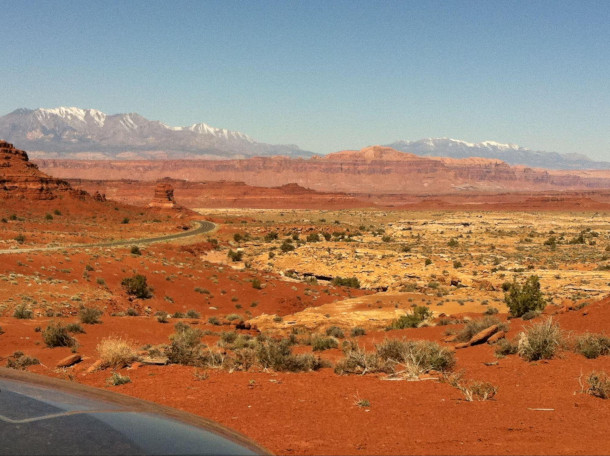
While serving under President Biden, former Secretary of the Interior Deb Haaland helped restore the Bears Ears National Monument, which was reduced in size under the first Trump administration. (Photo: Photo by Mike McGlew - Mcglewm, Wikimedia Commons, CC BY-SA 4.0)
HAALAND: Look, our public lands belong to every American, and I think as soon as any public lands are threatened, that every American should stand up for them, right? And I had so many opportunities to be on our public lands when I was growing up, and I want that for every child. These lands belong to us, it's our cultural heritage. And quite frankly, the Department of the Interior has an obligation to protect our cultural heritage for every American. So I'll do whatever I can do to stand up for our public lands. They give us this amazing outdoor economy that so many people rely on to keep a roof over their family's head, so it's smart to make sure that our public lands are there, because folks make a living by being on our public lands. And of course, our children deserve to have these public lands far into the future.
DOERING: You know, we've been reporting here on the show about a couple of national monuments that I think you were involved in helping designate just before the end of President Biden's term, in California. This is Chuckwalla National Monument and Sáttítla Highlands National Monument. And you know, from our understanding, it looks like the Trump administration is really looking at scaling those back. So what's your understanding of what they're trying to do, and what are your concerns in terms of the Trump administration trying to roll back these designations?
HAALAND: Well, I hope that the tribes, some of these were tribally led conservation efforts. The Indian tribes in California had fought for these areas for a very long time, and I hope that the tribes are rising up and making the way they feel about this known to this administration. I mean, look, when I was in the department, community led conservation, tribally led conservation, these were efforts that had been in the works for decades, right? So it wasn't just a overnight type of decision. These were decisions that took a long time to make, that involved so many people who live in the areas – elected officials, tribal members, folks who came together because they care about our public lands. And so, I can only hope that if this administration is talking about rescinding some of these, that they are actually going back to the communities and getting that buy in, right? If it took 20 years to get something done, it should take 20 years to undo it.
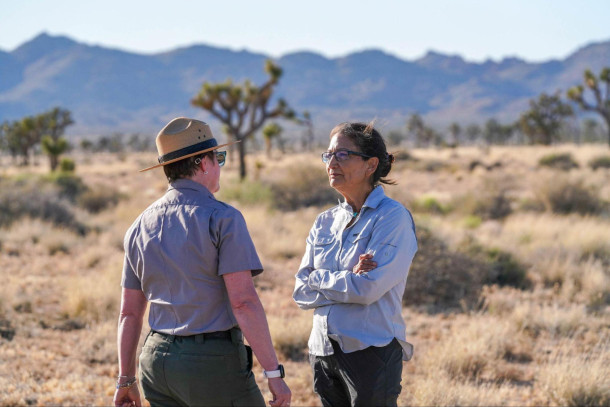
Former Secretary of the Interior Deb Haaland visited the proposed site for the Chuckwalla National Monument in Southern California in May 2024. The Chuckwalla National Monument was designated under President Biden in January of 2025. (Photo: U.S. Department of the Interior, Wikimedia Commons, Public domain)
DOERING: Now, the current administration is terminating environmental justice and Diversity Equity and Inclusion or DEI efforts. As a minority group that has historically been denied civil rights and faced economic and health disparities, what's your perception of how Native American communities may be impacted by this shift?
HAALAND: So I find it interesting that they would lump Native Americans in with DEI considering that the federal government has an obligation to Indian Tribes. We have government-to-government relationships, and the federal government has trust and treaty obligations to Native Americans. It isn't DEI. And I hope that this administration will perhaps read up on some history and understand that they have to live up to these trust and treaty obligations, because, yes, Indian tribes, at one time, this was all of our land. There was not one place in North America that didn't belong to indigenous people, and so in exchange for all of the land that became the United States, the United States Government made certain promises to Indian tribes. Tribes need to have a seat at the table, and they have to have a say in the decisions that are made about them, and so I am hopeful that these voices will permeate the federal government, and that the federal government, at this point, will know and understand what their obligation is to tribes.
DOERING: Now, you're running for Governor of New Mexico, where your family has been for, I believe it's 35 generations, and I know that you're a proud member of the Laguna Pueblo tribe. To what extent has that identity uniquely prepared you to serve the people of New Mexico?
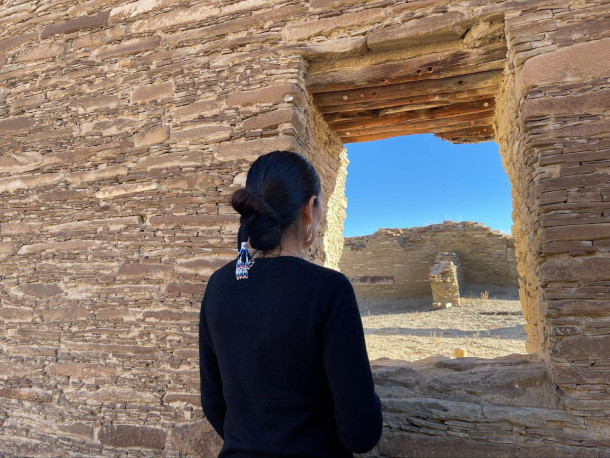
Deb Haaland, a member of the Laguna Pueblo tribe, visits Chaco Culture National Historical Park in New Mexico, a cultural heritage site for the Pueblo people. (Photo: Felicia Salazar, Department of the Interior, Public Domain)
HAALAND: Well, I always say I'm a Pueblo woman first. That's definitely my identity. I am who my mom and my dad, and my grandparents raised me to be. And so, I've had a number of opportunities for young folks to be in my office, whether it was in my congressional office or, when I was Secretary, in that office. And I often tell them I never realized that spending time with my grandfather in his corn field would inform a job that I have in public service, but it did. The times that I would spend in my grandfather's field picking worms off of ears of corn, or helping him irrigate, or hoe weeds, those were all experiences that endeared me to our natural resources and to our beautiful landscapes and to the outdoors. Likewise, my dad taking us on hikes, taking us fishing, renting a rowboat so that we can row up and down a swamp for a couple of days. These were all things that helped me to embrace the jobs that I've had in public service, so I'm very grateful for that, and I think we can all dig deep and ask ourselves, you know, why we do what we do. It's because we care deeply, because we were taught to care by the people who loved us as we were being raised.
DOERING: Mmm, yeah, going back one generation, and also many more, it sounds like.
HAALAND: Yes.
DOERING: And talk to me about some of the lands in New Mexico that are particularly significant to your tribe, the Laguna Pueblo. What do those areas mean to your people and to you personally?
HAALAND: You know, we have six villages at Laguna. We're agriculturalists, you know, Pueblo Indians were farming the desert long before they migrated to the Rio Grande Valley. And so there are areas on our pueblos that are earmarked specifically for agriculture, and those places are very special. I mean, those fields have fed our people for generations and generations, and I know that there are some organizations that are really working hard to engage youth in those activities. It's a tradition that I hope will continue long into the future. We should be farming our own food, and we should be thinking about how our traditions and our culture make our lives richer and actually feed us. So I would say that, in short, our agricultural fields are essentially sacred to us. And of course, we just have amazing landscapes in Laguna. My grandmother is from the village of Mesita, and there's a big red mesa that looms over the village. And when I was a kid, my cousins and I, we used to hike to the top of that often. And the landscapes are with me always.

Deb Haaland, a 35th generation New Mexican and member of the Laguna Pueblo tribe, is now running as a Democrat for Governor of New Mexico. (Photo: Deb Haaland for New Mexico Campaign)
DOERING: As we speak, we're just wrapping up Women's History Month, but I think we can all agree that women's history doesn't suddenly become irrelevant once March has passed. So talk to me about your journey as a woman, a Native American woman, to where you are today. What's kept you going?
HAALAND: As I mentioned, I am who I am because of the people who raised me. And my grandmother, she was the matriarch of our family. We're a matrilineal society, so the women are all very important in Pueblo society. And I was raised by a woman who would get up at sunrise every morning and clean her entire house, and tend to things. My grandmother worked hard every single day, likewise my mother did, and so, I feel so grateful that I had those role models. And so when I set out to run a campaign, to get elected, to be a Congresswoman for a district in my state, I do that with the way I was raised in mind. That means I'm going to work extremely hard, that the people are relying on me, and I have an obligation to them as a public servant to work as hard as I can and make sure that people have a voice, right? When you're a public servant, you should hear from the people who you're serving, and you should be attentive to their needs. So I hope that I can continue to be that kind of public servant. I care deeply about my state, and as a 35th generation New Mexican, of course, I'll do whatever I can to lift up New Mexicans across the state.
DOERING: Deb Haaland is former US Secretary of the Interior and is currently running for Governor of New Mexico. Thank you so much, Secretary.
HAALAND: Thank you very much.
Related links:
- Deb Haaland for New Mexico Campaign Website
- US Department of the Interior | “Interior Secretary Takes Steps to Unleash Alaska’s Extraordinary Resource Potential”
- Living on Earth |"National Monuments Restored"
- National Parks Conservation Association | “President Biden Establishes Chuckwalla National Monument, Expanding the Largest Protected Landscape in the Lower 48 States”
- The White House | “Proclamation on the Establishment of the Sáttítla Highlands National Monument”
- Living on Earth | “Meet Deb Haaland, Native American Congresswoman”
- Living on Earth | “Deb Haaland: ‘Fierce for Our Planet’”
- Living on Earth | “Madam Secretary Haaland”
[MUSIC: Mariachi Mexico de Pepe Villa, “Contigo” on 15 Boleros Instrumentales, Yuriko Records S.A. de C.V.]
CURWOOD: Living on Earth is produced by the World Media Foundation. Our crew includes Naomi Arenberg, Paloma Beltran, Kayla Bradley, Daniela Faria, Mehek Gagneja, Swayam Gagneja, Mark Kausch, Mark Seth Lender, Don Lyman, Ashanti McLean, Nana Mohammed, Aynsley O’Neill, Sophia Pandelidis, Frankie Pelletier, Jake Rego, Andrew Skerritt, Melba Torres, and El Wilson.
DOERING: Tom Tiger engineered our show. Alison Lirish Dean composed our themes. You can hear us anytime at L-O-E dot org, Apple Podcasts and You Tube music. We always welcome your feedback at comments at loe.org. I’m Jenni Doering.
CURWOOD: And I’m Steve Curwood. Thanks for listening!
ANNOUNCER: Funding for Living on Earth comes from you, our listeners, and from the University of Massachusetts, Boston, in association with its School for the Environment, developing the next generation of environmental leaders. And from the Grantham Foundation for the protection of the environment, supporting strategic communications and collaboration in solving the world’s most pressing environmental problems.
ANNOUNCER 2: PRX.
Living on Earth wants to hear from you!
Living on Earth
62 Calef Highway, Suite 212
Lee, NH 03861
Telephone: 617-287-4121
E-mail: comments@loe.org
Newsletter [Click here]
Donate to Living on Earth!
Living on Earth is an independent media program and relies entirely on contributions from listeners and institutions supporting public service. Please donate now to preserve an independent environmental voice.
NewsletterLiving on Earth offers a weekly delivery of the show's rundown to your mailbox. Sign up for our newsletter today!
 Sailors For The Sea: Be the change you want to sea.
Sailors For The Sea: Be the change you want to sea.
 The Grantham Foundation for the Protection of the Environment: Committed to protecting and improving the health of the global environment.
The Grantham Foundation for the Protection of the Environment: Committed to protecting and improving the health of the global environment.
 Contribute to Living on Earth and receive, as our gift to you, an archival print of one of Mark Seth Lender's extraordinary wildlife photographs. Follow the link to see Mark's current collection of photographs.
Contribute to Living on Earth and receive, as our gift to you, an archival print of one of Mark Seth Lender's extraordinary wildlife photographs. Follow the link to see Mark's current collection of photographs.
 Buy a signed copy of Mark Seth Lender's book Smeagull the Seagull & support Living on Earth
Buy a signed copy of Mark Seth Lender's book Smeagull the Seagull & support Living on Earth

